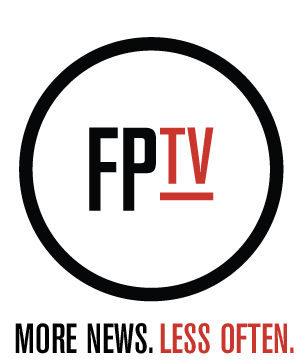Visual Vernacular: Rahul Mitra
Rahul Mitra, “Culture Bleed,” 2024 (detail)
Rahul Mitra has combined the skill sets of the visual and linguistic arts along with his background as a scientist to exhibit a new take on contemporary history across our globe. Sociopolitical dialogues that wade in the whys of custom, love, technology, strangeness, poverty, and other critical matters flow through his work with the visual topography of an intricate layout. His works have been shown across the globe in locations such as France, Greece, Italy, Spain, Peru, Turkey, Egypt and India. Mitra’s other project, Box City — a street and public art installation using thrown away cardboard and wood boxes, in collaboration with people (more than 250 so far) who are not in the mainstream culture — has been built in Paris, in collaboration with Centre Pompidou, as well as in locations such as Marseille, Berlin, Turin and Delhi.
With an intriguing sense of storytelling depicting topics with color emphasis and heightened emotion, Mitra combines these elements to reach beyond a single moment. His latest show, I bury my past so I can repeat it, hosted at GSpot Contemporary Art Space reveals the repetition of our current cultural collapse in a manner of shape, symbols, colors, and patterns of great interest. Mitra answered some questions as to where this style came from along with how the title of the show reveals itself in the current work.
Free Press Houston: How was art a part of your life growing up?
Rahul Mitra: As far back as I remember I was drawing. I grew up in Hyderabad, India, which was — still is — a laid back, multicultural town on the Deccan Plateau. There was a lot of art from movie posters, billboards to street performance costumes quite close to Nick Cave’s sound suits, music, plays etc. Interestingly, none of this was labeled as art. It was something that happened on the streets, like diorama spinning endlessly. I was drawing with leaky fountain pens on any paper I could find and then started emulating oil paintings with watercolors — that’s what I could afford. Looking back, it seems like nothing has changed very much in terms of how art is always part of my life. I do have better materials and built visual vocabulary drawn from my experiences.
FPH: What are some of the concepts you draw from to create your work?
Mitra: I am a researcher and a documentarian in several ways. I draw my concepts from the contemporary history that we are making as we live. It is amazing to see how things have changed in terms of material progress and yet how cultural and social progress are in retrograde, again, specifically, in terms of economic, racial, social, political and gender divides that are age old and are kept alive by bigots and the like. It is almost like we the humans suffer from an extreme case of social Alzheimer’s disease and repeat the vile ad nauseam.
FPH: What was your process for working out new ideas and bodies of work?
Mitra: I start with the news media and media in general. For a period of time, say, three to six months, I collect all the words, phrases and events that we think as a global collective important and many times repulsive and rank them according to the number of hits on several Internet search engines. I also classify the images that pop up along with the search results. This gives me the state of the mind associated with the words and phrases that are in the news. I then transform these images in my own vocabulary into narratives of contemporary history and thus create my own universe of history. In my drawing, the icons that I create are scaled according to the number of hits on search engines and their statistical significance. I call this a ‘pictograph.’
FPH: In your latest show, how did you illustrate the sense of history, self, and the human condition?
Mitra: In the show, the above process of collecting words, phrases and events led to several pieces, particularly “Culture Bleed,” which is a six-month collection of news from the refugee crisis in Europe, oil and the election crises in America and other such themes. I wove these headlines in to the pictograph that then became this fabricated world stark in its nature that reflects the human condition. It is my reaction to the world I am living in.
FPH: How do you bring visual perspective into your pieces and how do you hope a viewer interacts with your pieces?
Mitra: Viewers enter my world with very little knowledge of what went into creating these worlds that I present to them in my own aesthetic judgment. “Buried Memories” is one such piece, where I stuck to the literary structure of in media res which forces the viewer into the middle things, suddenly traps the viewer in my world with no idea of what it is. Then the rest of the narrative the viewer fills in gradually like looking at flashbacks and draws conclusions, instead of my visual exposition.
FPH: What has your artistic experience been like here in Houston?
Mitra: Houston is a city made for the practicing artist. Although I have considered myself an artist all my life, my innate need for peer review forced me to exhibit my work. If I did not live in Houston with the kind of support that I received and continue to receive from other artists, curators, galleries, collectors, friends and institutions, I would not have done close a hundred shows in fifteen countries and at venues including galleries, museums and alternate places, all in the last 7-8 years.
FPH: Any upcoming projects you would like to mention?
Mitra: I have a few projects in LA, Paris and India that I am working on currently for the upcoming three years. These include street installations, drawings and paintings.
GSpot Contemporary Art Space (310 E 9th Street) presents “I bury my past so I can repeat it” until September 28, 2024 with an artist talk happening tonight, September 22, from 5:30 to 7:30 pm.












![FPH_2016_AdPackage_Lovebuzz_420x75-FeaturedBanner[Mobile]](../2016/08/wpimages_subdomain/FPH_2016_AdPackage_Lovebuzz_420x75-FeaturedBannerMobile.png)



